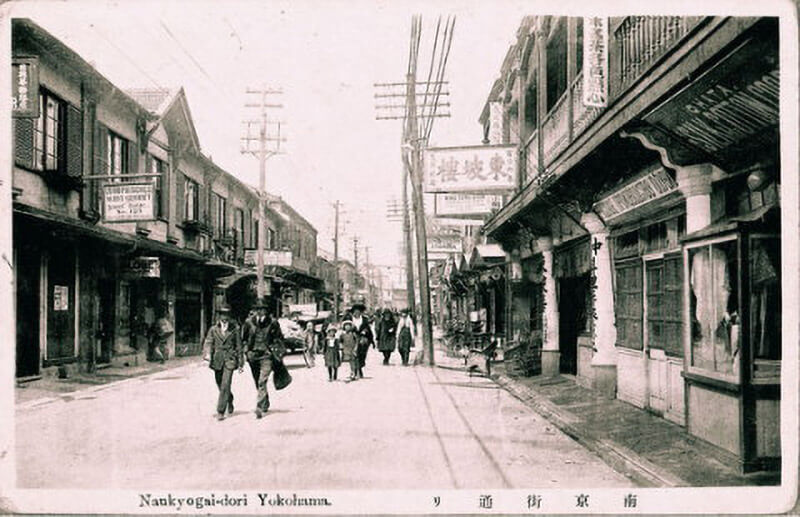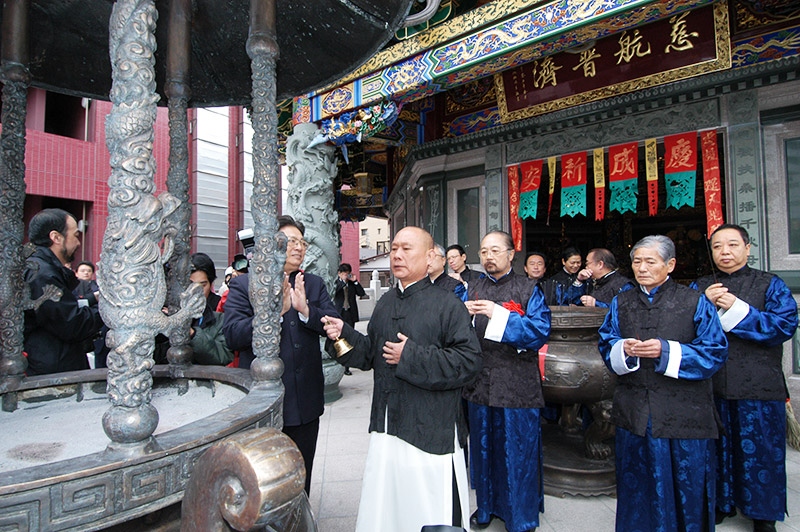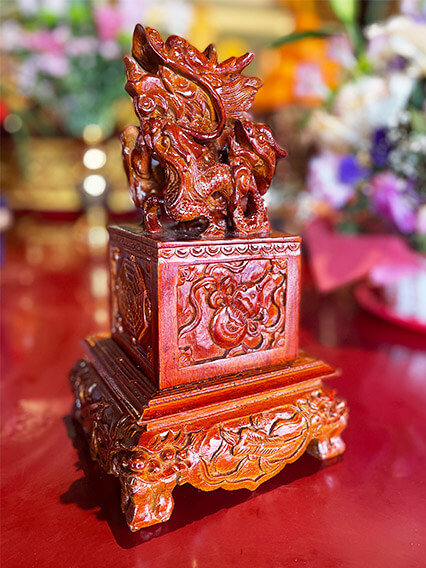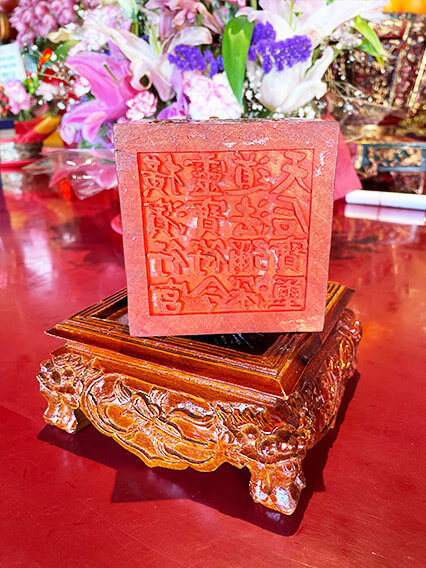Mazu Miao History
Following the Japan-US Treaty of Amity and commerce in 1858, the coastal town of Yokohama was developed as an open port on June 2, 1859. As foreign companies established businesses in Japan, many Chinese middlemen arrived to facilitate trade and negotiate with interpreters and local merchants. They brought to Japan many skills from home, dressmaking, art, painting, and letterpress prints to name a few. Over the years, the number of overseas Chinese immigrating to Yokohama increased. In 1886, Yokohama Chinatown’s first temple, Kuan Ti Miao was established where Mazu was also enshrined.

Records indicate that Japan’s earliest history of Mazu worship began in the Ryukyu Islands, in Okinawa as early as the mid1400’s. Today more than 20 shrines and temples house Mazu as many traveling Chinese brought their protectress with them. Roughly 1500 temples dedicated to this goddess exists in 26 countries, with over 200 million believers all over the world. Here in Japan, she can be found in temples in port cities where the Chinese travelers settled such as Yokohama, Osaka and Nagasaki.

Today, Mazu Miao sits on what was originally the Qing Dynasty Consulate during the Meiji Era (1868-1912). Construction of this temple took the cooperation of our local community and we are honored to have the first temple in Japan dedicated to the Holy Heavenly Mother. Yokohama Chinatown’s Mazu Miao is the first temple dedicated to this goddess in Japan and has been awarded a temple stamp by Taiwan’s Tainan Grand Mazu Temple.


(Official temple stamp bestowed to Yokohama Chinatown Mazu Miao by Taiwan’s Tainan Grand Mazu Temple)